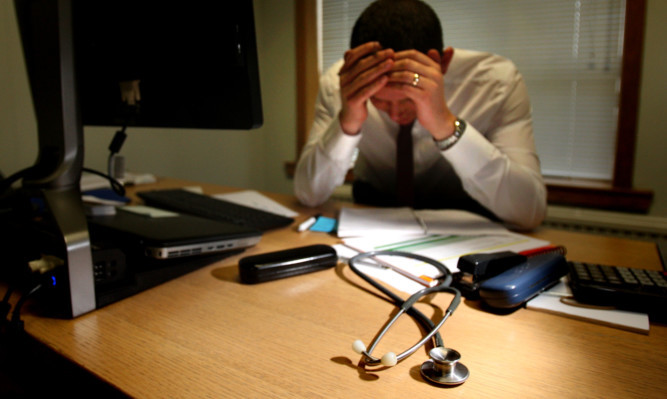Nine out of ten GPs believe their workload has a damaging effect on patient care at least some of the time, a new survey by doctors’ leaders has found.
Three-quarters (75%) of family doctors in Scotland who took part in the British Medical Association (BMA) national survey of 2015 said the amount they have to do “at times has a negative impact on the quality of care” patients receive.
Scotland has the highest proportion of GPs who raised this concern, according to the survey, with a further 17% of GPs north of the border stating that their workload “significantly negatively impacts” on the quality of care they can provide.
Three-fifths (60%) of doctors in Scotland who took part in the survey described their workload as being “generally manageable” but “too heavy at times”, while a quarter (25%) said it was “unmanageable”.
Only 8% thought having 10 minutes for each consultation was sufficient time, with 63% wanting longer consultations for certain groups of patients – such as those with long-term conditions – and 30% saying there should be more time available for all patients.
A total of 1,844 doctors in Scotland took part in the research, with the BMA saying this represented 37% of all GPs in the country.
When asked what would help them deliver the “essential components of general practice”, 75% wanted longer consultation times, 74% believe there should be more GPs and 69% responded that increased core funding for practices would make a difference.
Dr Colette Maule, co-negotiator of the BMA’s Scottish GP committee, said: “This survey reflects the immense pressure that GPs working across Scotland are feeling just now.
“The rising workload is simply unsustainable and something has to change otherwise general practice will break.
“Giving us more time with patients, expanding the GP workforce and supporting the practice-based primary care team will help to ensure the quality of care our patients receive remains of a high standard.
“In addition, providing stable funding arrangements to meet the rising costs of providing increasingly complex care in the community will alleviate some of the helplessness that GPs are clearly feeling just now.
“Politicians need to stop fixating on how they can demand more from general practice and instead focus on what they can do to support GPs to provide the quality of care that our patients deserve within the constraints that exist.”
Health Secretary Shona Robison said: “The recently-agreed new GP contract in Scotland will give general practice financial stability, reducing the bureaucratic burden and freeing up GPs to spend more time with patients.
“Individual GP practices determine their appointment and consultation arrangements.
“The length of a consultation will vary depending on the clinical needs of the individual patient and is a matter of professional judgement for the GP.
“The Scottish Government is determined to continue supporting and sustaining Scottish general practice. Under this Government, spending on GP services has increased by £69.7 million or 10%.
“This Government’s investment in primary care has seen the number of GPs increase by 6.9%. There are now more GPs per head of population in Scotland than England.”
